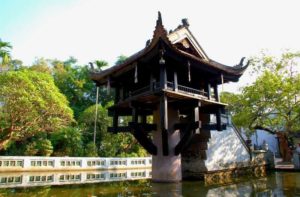Recently updated on August 15th, 2022 at 08:42 am
One Pillar Pagoda is a temple located in the heart of Hanoi capital. This is a temple with unique architecture in Vietnam, built by King Ly Thai Tong in the winter of October (lunar calendar) in 1049.
The temple has a wooden structure, in 1105, King Ly Nhan Tong expanded the architecture of the temple area and built Linh Chieu lake.
Later, the scale of One Pillar Pagoda left only a small temple on the stone pillar as the current image. French colonialists before withdrawing from Hanoi blasted the temple.
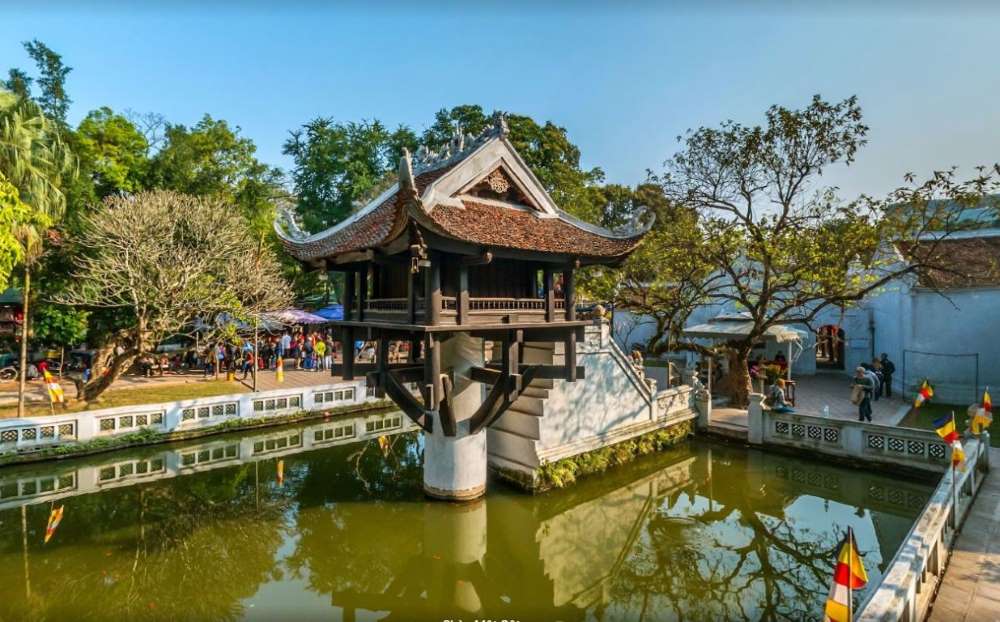
However, the temple has been restored basically as before. One Pillar Pagoda called in the Sino-Vietnamese language is Nhat Tru Thap.
The pagoda also has other names as Dien Huu Tu or Lien Hoa Dai. The temple is located on the street of the same name in Ba Dinh District, Hanoi.
Not only considered the temple with unique artistic architecture in Vietnam as well as in Asia; One Pillar Pagoda is also a spiritual destination, a thousand-year cultural symbol of Hanoi.
The history of One Pillar Pagoda
One Pillar Pagoda started construction in 1049, under King Ly Thai Tong. According to folk legend, in a dream, King Ly Thai Tong dreamed of Quan Am Buddha sitting on a lotus radiating aura and inviting the king to come along.
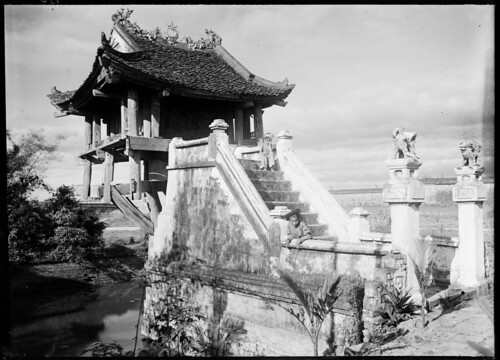
One Pillar Pagoda in 1896. Photo: Firmin André Salles.
When he woke up, the king immediately told his servant. Monk Thien Tue advised the king to build the pagoda on a stone pillar just like in a dream; as a lotus throne for her Buddha to dwell on.
It can be seen that the Ly Dynasty was a very religious dynasty of Buddhism; This period is considered the golden age of Buddhism in national history.
During the war against the French, One Pillar Pagoda was destroyed by the French expeditionary army.
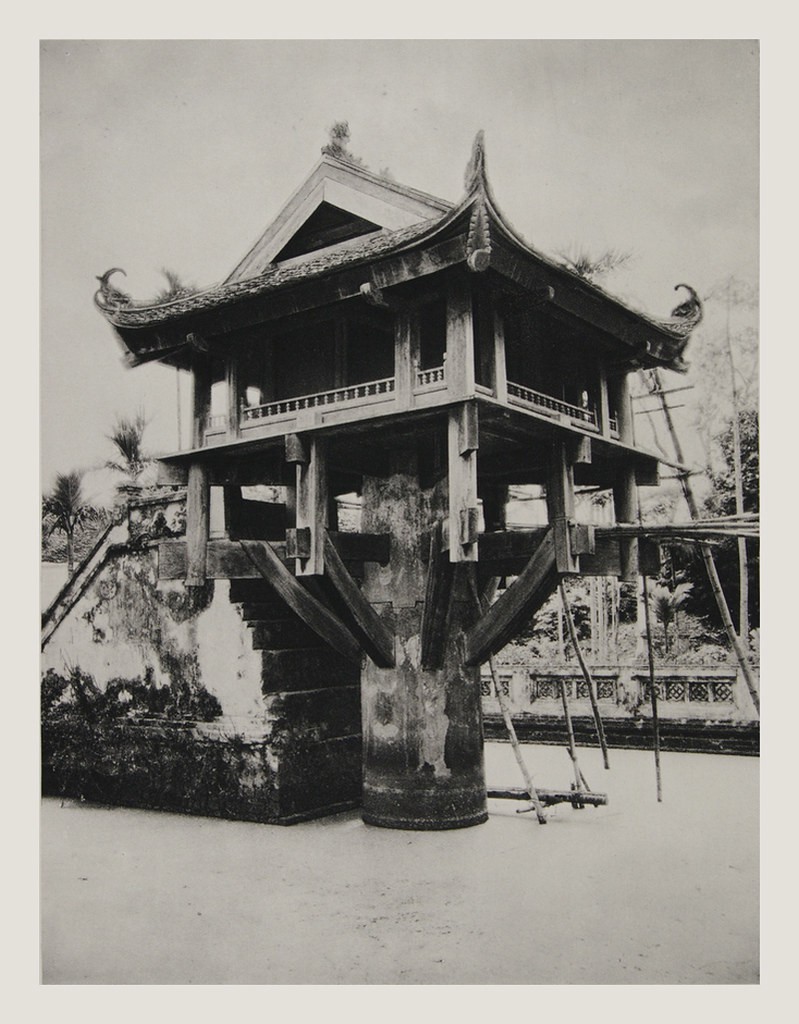
After taking over the capital, the Ministry of Culture of Vietnam studied and set up a project to overhaul and rebuild One Pillar Pagoda like its original architecture.
The architecture of the one-pillar pagoda
The original structure of One Pillar Pagoda is supported by wooden beams firmly attached to the stone pillars. The current structure of One Pillar Pagoda includes Pillar, Lien Hoa Dai, and a pagoda roof.
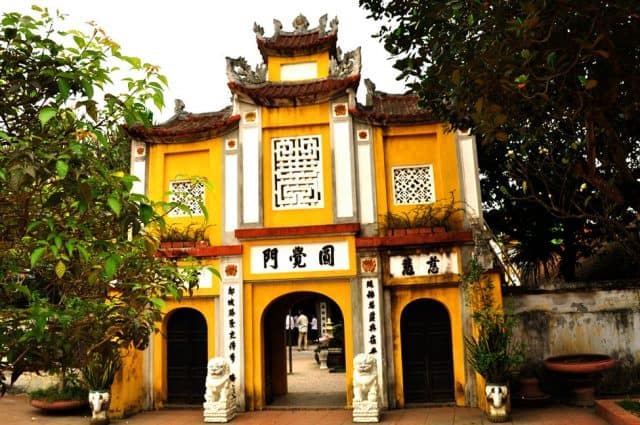
The Tam Quan Gate
The pillar of the one-pillar pagoda is built with two overlapping stone pillars to form a vertical pillar with a height of 4 m; excluding the sink below the foot.
The diameter of the stone pillar is 1.2 meters wide, making the viewer feel “as solid as a stone table”.
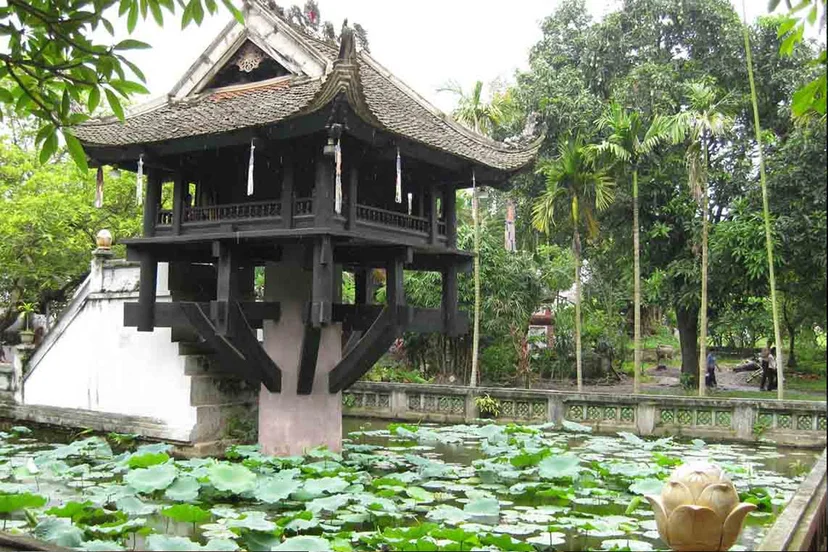
Lien Hoa Dai
Lien Hoa Dai has a square of 3 meters on each side, surrounded by large bars, supported by a solid column system; below are large wooden beams directly attached to the stone pillars.
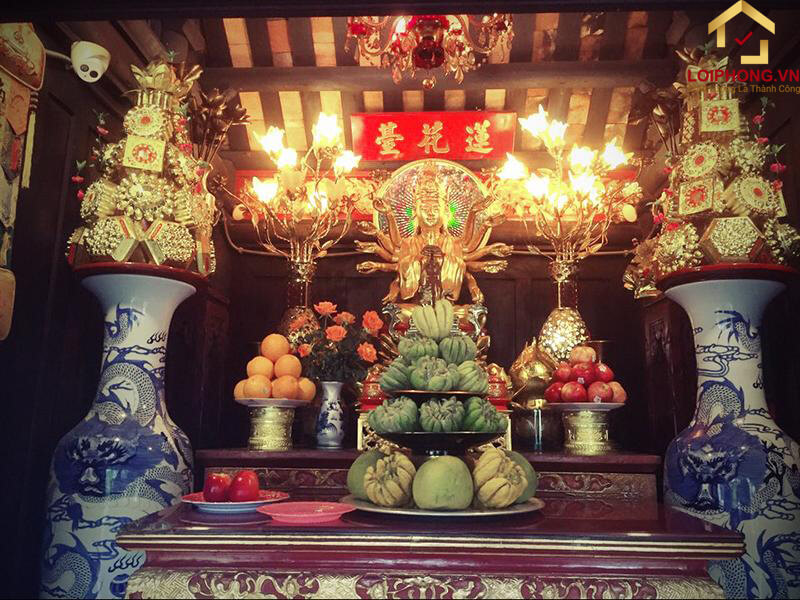
Inside One Pillar Pagoda
The roof of the pagoda is covered with brick, traditionally red, brick, covered with time moss. Each tile is an expression of the craftsman’s meticulousness.
Opening hours and entrance fees
Because it is located in the complex of Ba Dinh Square and Uncle Ho’s Mausoleum; the opening hours of Hanoi One Pillar Pagoda depend on this point.
Accordingly, to visit this unique temple, visitors can go in the time frame from 7:00 am to 6:00 pm. Which, the duration of the tour will be 1-3 hours.
As for the ticket price, if you are a Vietnamese citizen when visiting, the pilgrimage will be a free entrance ticket. Particularly for foreign tourists, the fee will be 25,000 VND / visit.
Where is One Pillar Pagoda
The pagoda is located right behind Uncle Ho’s Mausoleum and Ba Dinh Square, so with these famous places, you can easily choose the most suitable means to move to One Pillar Pagoda.
How to get to One Pillar Pagoda
If you are in the inner city, you can take a motorbike taxi or taxi and you just need to say the destination is One Pillar Pagoda or Uncle Ho’s Mausoleum and the drivers will take you to a safe place.
If you ride a motorbike, you can see directions on Google Maps to get here and park your car at the parking lots outside the road to visit the temple.
If you take a bus, you can take bus lines 22, 09, 16, 32, 33, 34, 18, 50, and 45 and get off at the stop at Le Hong Phong street. This is the bus stop closest to the location of One Pillar Pagoda.
Best time to visit One Pillar Pagoda
You can visit One Pillar Pagoda at any time of the year. However, if you want to experience the spiritual culture of the Vietnamese people, then you should visit the pagoda in the summer and should come on the 1st or 15th day of the lunar month.
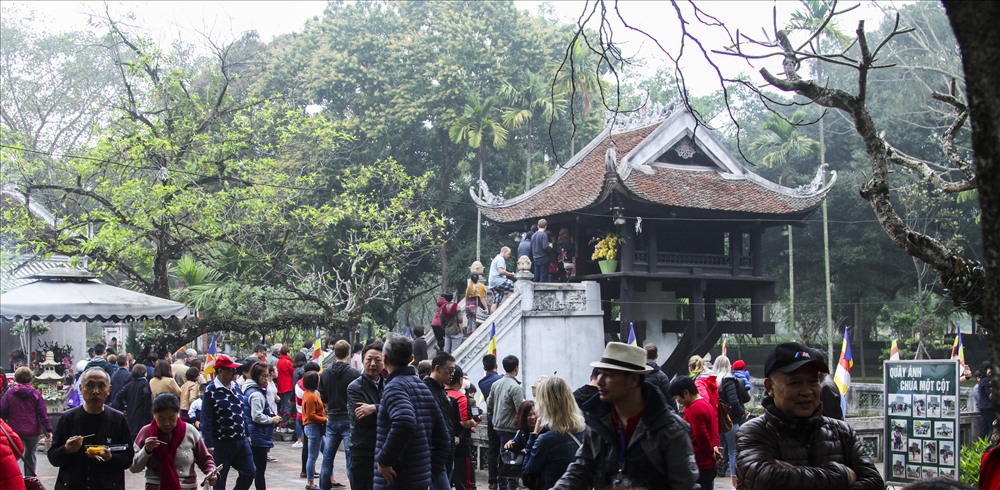
Tourists visit One Pillar Pagoda on New Year’s Eve
Coming here in the summer, you will be able to admire the lotus flowers that bloom a lot with a gentle fragrance that further highlights the noble beauty of the Lotus Flower Tower above. The lotus is the national flower of Vietnam and is also a symbol of the sacred and meaningful Buddha Dharma lotus.
Spiritual tourist sites near One Pillar Pagoda
After visiting One Pillar Pagoda, you can also conveniently visit some of the following points:
- Quan Thanh Temple: An ancient sacred temple of Thang Long Tu Tran. Quan Thanh Temple is a very close site to One Pillar Pagoda just about 1km away.
- Bach Ma Temple: about 2.5km away from Tran Quoc Pagoda towards Hanoi’s Old Quarter. This is one of the Four Old Thang Long Citadel. With dragon head designs and unique unicorn stone incense burners.
- Ngoc Son Temple: The temple is located on a small island in the middle of Hoan Kiem Lake.
- Tran Quoc Pagoda: Buddhist pagoda was built in the 6th century; is located on a small and romantic island with many tombs and towers.
There are also many other interesting attractions for visitors when visiting One Pillar Pagoda.
Not only easy to move to nearby attractions by public transport or private transport, but visitors can also enjoy the traditional space and variety of experiences when visiting Hanoi.
Tips
One Pillar Pagoda is a historical site as well as a main spiritual place, so when you come here, you need to pay attention to the following:
- Choose clothes that are discreet, polite, and suitable to the fine customs and culture of the Vietnamese people.
- For a famous place like One Pillar Pagoda, every visitor coming here wants to take a souvenir photo. To get beautiful pictures, you should carefully choose the shooting angle and while shooting, you should also keep order, should not be noisy, and avoid affecting others.


